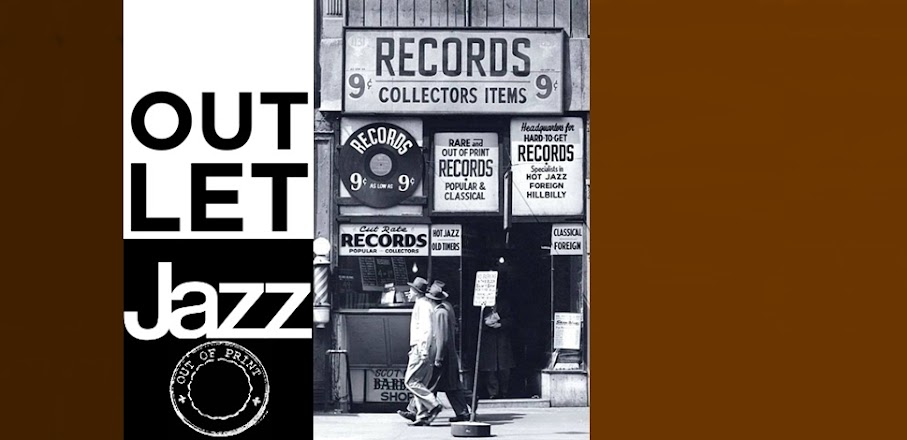In Southern California the evenings are cool, as many an Easterner has found out to his discomfort. But periodically the sequence of chilly dusks is broken by a hot, dry, sometimes rather nervous wind, that sweeps from the interior and changes the entire atmosphere of the area. Then you see the retired Idaho farmers sitting on their verandahs rocking back and forth and watching the traffic.
They call this wind a Santa Ana. This album is NOT called a Santa Ana, but it does bring a warm, almost hot breeze to Southern California, or West Coast, jazz which shows that it need not always be cool.
And it’s time some real effort was made to demonstrate to the world that everything recorded in the Hollywood studios is not more Brooks Brothers tan Madison Avenue and not more emotionally restrained than a London native in a room full of Americans. As Betty Roche wroje to Jimmy Lyons, whose nightly KNBC, San Francisco eee has been a breath of warmth in what has sometimes seemed a wilderness of cool sounds, "it's good to hear the swingers".
Quincy Jones, who produced this album, selected the personnel, picked the instrumentation and arrangers, is a West Coast product himself — he’s from Chicago originally but settled in Seattle when he was 10 and was raised there. For that matter, most of the so-called West Coast musicians are originally from the East, or at least not the West, and they don't always play in that tight little style that has become known as West Coast. They can get pretty funky, especially, as Shelly Manne says, "if they’ve eaten enough in those all-night hamburger joints".
In ten years of writing on jazz for Down Beat and in the San Francisco Chronicle, I have never known what "West Coast" was, really, except in terms of individuals and only then for a specific time and a specific performance. This album will do considerable good if it makes people realize, as I hope it does, that all winds do not blow cool on the Pacific Coast. Sometimes they blow hot, too. *Ralph J. Gleason (liner notes)*
There is a bit of mis-information surrounding this album, and I’ve seen more than one inaccurate review, so to clear up a few things first, Go West Man! is not a big band album and the arrangements on here are not by Quincy Jones. Although there is some good music on here, in some ways, this second album in Quincy Jones’ young career is somewhat of a disappointment. Jones’ first album was a great success and revealed a young big band arranger with some fresh new sounds, so I would imagine his new fans were disappointed to find out that Jones only served as a conductor and producer, not arranger, on his follow-up LP. There are three different mid-sized groups that Jones works with on here, including two groups led by saxophone summits and one group led by a trumpet quartet. All three groups have a piano, bass and drums rhythm section. Each of the three groups is given three songs which leads to nine songs total on the album if you are keeping score at home.
All three of these groups are very talented, but possible top honors goes to an all-star sax five-some that includes Art Pepper and Charlie Mariano. The west coast sax players are known for their silky smooth ensemble work, and this group is a good example. The liner notes claim the other sax group is made up of three tenors, but there is quite clearly a fourth man on baritone, and one of the supposed tenors sounds suspiciously high. The arrangements for the nine tracks were provided by Jimmy Giuffre, Lennie Niehaus and Charlie Mariano. “London Derriere”, with its striking sounds made up of trumpets with Harmon mutes, is the arrangement that sounds the most like Quincy. This album is recommended for fans of west coast jazz, there so much great saxophone playing on here, both in ensemble and in solos, but Quincy Jones fans may be disappointed by the somewhat misleading presentation and slap together nature of this album. *jazzmusicarchives.com*
Quincy turns his soul jazz arranging style to a band filled with West Coast players, and he gets them to groove a lot more than you'd expect! Players include Herb Geller, Art Pepper, Charlie Mariano, Bill Perkins, and Walter Benton. The tracks are short, with tight solo space, and most of them were written and arranged by West Coasters like Jimmy Giuffre, Lennie Niehaus, and Johnny Mandel. Titles include "Be My Guest", "London Derriere", "Kings Road Blues", "The Oom Is Blues", and "Bright Moon". *dustygroove.com*
1 - Dancin' Pants
(Jimmy Giuffre)
2 - Blues Day
(Jimmy Giuffre)
3. Bright Moon
(Jimmy Giuffre)
4 - No Bones At All
(Johnny Mandell)
5 - The Oom Is Blues
(Charlie Mariano)
6. Be My Guest
(Lennie Niehaus)
7 - Medley:
•What's New?
(Haggart, Burke)
•We'll Be Together Again
(Fischer, Laine)
•Time On My Hands
(Adamson, Youmans, Gordon)
•You Go To My Head
(Coots, Gillespie)
•Laura
(Mercer, Raksin)
8 - London Derriere
(Johnny Mandel)
9 - Kings Road Blues
(Lennie Niehaus)
Conte Candoli, Pete Candoli, Harry "Sweets" Edison, Jack Sheldon (trumpets [#2, #4, #8]); Benny Carter, Herb Geller, Charlie Mariano, Art Pepper (alto saxes [#1, #6, #9]); Pepper Adams (baritone sax [#3, #5, #7]); Walter Benton, Buddy Collette, Bill Perkins (tenor saxes [#3, #5, #7]); Lou Levy [#1, #6, #9], Carl Perkins [#2 to #5, #7, #8] (pianos); Red Mitchell [#1, #6, #9], Leroy Vinnegar [#2 to #5, #7, #8] (basses); Shelly Manne [#1, #3, #5, #6, #7, #9], Mel Lewis [#2, #4, #8] (drums).
Jimmy Giuffre, Johnny Mandel, Charlie Mariano, Lennie Niehaus (arrangements); Quincy Jones (conductor).
Recorded in Los Angeles, California, February 25, 1957.


https://1fichier.com/?6o9511dngako74netdus
ReplyDeleteGracias blbs. Las criticas no son muy buenas, pero a mi me parece estupendo. Muy agradable de escuchar.
ReplyDeleteMuchas gracias,
ReplyDeleteThank you so much!
ReplyDeleteThank you, blbs.
ReplyDelete